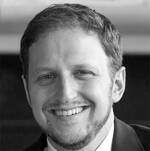
18 Oct Brain Waves Form Unique “Fingerprint” For Each Person
MedicalResearch.com Interview with:

Dr. Prerau
Michael J. Prerau, Ph.D.
Assistant Professor of Medicine,
Faculty, Division of Sleep Medicine
Harvard Medical School
Associate Neuroscientist and
Director of the Neurophysiological Signal Processing Core
Division of Sleep and Circadian Disorders
Department of Medicine Brigham and Women’s Hospital
MedicalResearch.com: What is the background for this study?
Response: The brain is highly active during sleep, which makes it an important, natural way to study neurological health and disease. Scientists typically study brain activity during sleep using the electroencephalogram, or EEG, which measures brainwaves at the scalp. Starting in the mid 1930s, the sleep EEG was first studied by looking at the traces of brainwaves drawn on a paper tape by a machine. Many important features of sleep are still based on what people almost a century ago could most easily observe in the complex waveform traces. Even the latest machine learning and signal processing algorithms for detecting sleep waveforms are judged against their ability to recreate human observation.
In this study, the researchers asked: What can we learn if we expand our notion of sleep brainwaves beyond what was historically easy to identify by eye?
MedicalResearch.com: What are the main findings? What types of disorders might be detectable with this technology?
Response: A team of researchers, lead by Dr. Michael Prerau, Ph.D. from Brigham and Women’s Hospital, developed a powerful computational tool for understanding brain health and disease, providing an enhanced way of characterizing the activity of the brain during sleep. The researchers devised a new method that extracts tens of thousands of electrical events from the brainwaves of a sleeping person. Information from these waveforms is then used to create a picture of brain activity that seems to act like a fingerprint — unique for each person and consistent from one night to the next. The researchers then compared the activity between the healthy subjects and a population of people with schizophrenia, finding new potential EEG biomarkers of schizophrenia that could be useful in better understanding the mechanisms of the disorder and in the development of targeted treatments.
MedicalResearch.com: What should readers take away from your report?
Response: These results suggest show that there is great neurodiversity, even within groups healthy people selected as control groups. If we can more accurately characterize the individual differences observed in both neurological health and disease, we can work towards improved diagnostics and treatments.
Citation: Patrick A Stokes, Preetish Rath, Thomas Possidente, Mingjian He, Shaun Purcell, Dara S Manoach, Robert Stickgold, Michael J Prerau, Transient Oscillation Dynamics During Sleep Provide a Robust Basis for Electroencephalographic Phenotyping and Biomarker Identification, Sleep, 2022;, zsac223, https://doi.org/10.1093/sleep/zsac223
The information on MedicalResearch.com is provided for educational purposes only, and is in no way intended to diagnose, cure, or treat any medical or other condition. Always seek the advice of your physician or other qualified health and ask your doctor any questions you may have regarding a medical condition. In addition to all other limitations and disclaimers in this agreement, service provider and its third party providers disclaim any liability or loss in connection with the content provided on this website.
Last Updated on October 18, 2022 by Marie Benz MD FAAD
